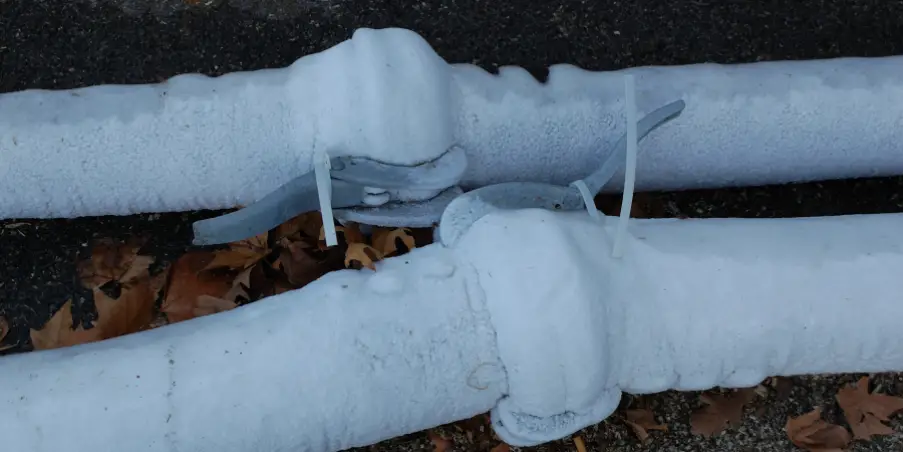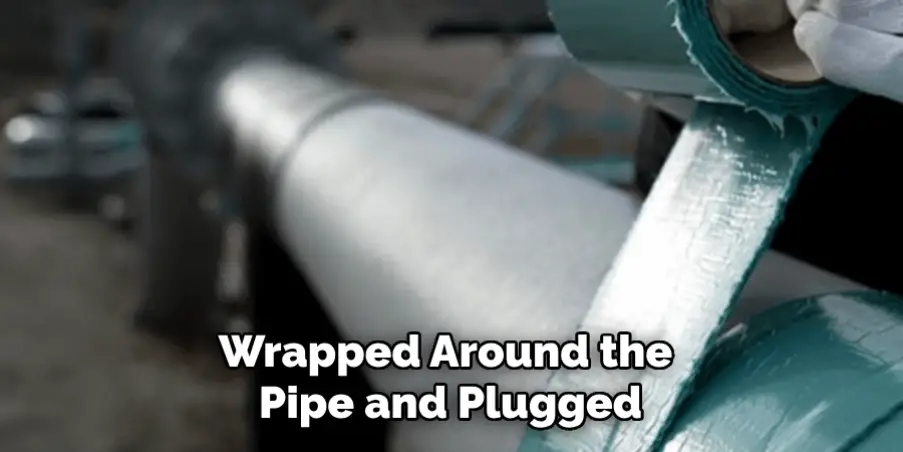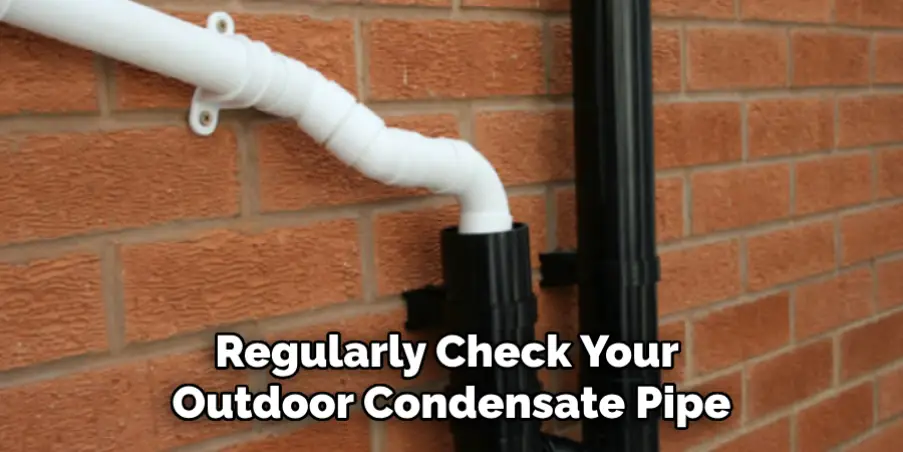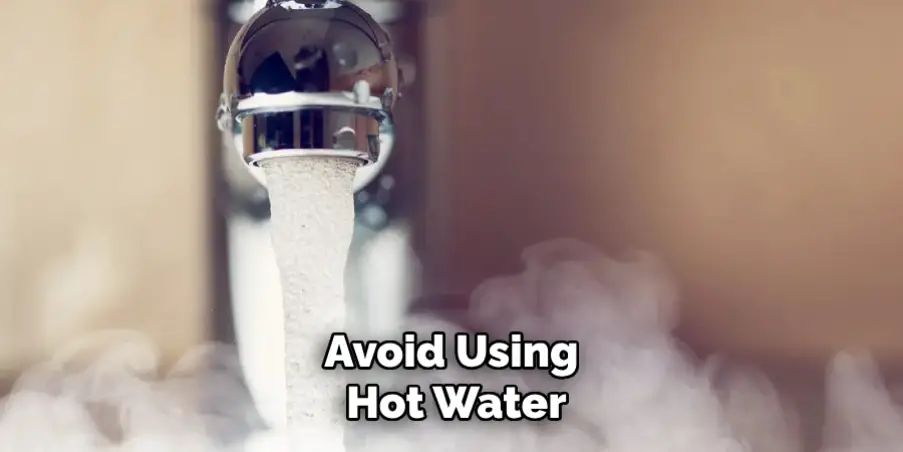Condensate pipes are an essential part of many heating and air conditioning systems. They are responsible for removing excess water created during the heating or cooling process. However, in colder climates, these pipes can become susceptible to freezing, causing a significant inconvenience and potentially damaging your system.

The main advantage of stopping a condensate pipe from freezing is that it will prevent your boiler from breaking down during cold weather. When the temperature drops, water in the condensate pipe can freeze and block the flow of water, causing your boiler to shut down.
This not only leaves you without heating and hot water, but it can also cause damage to your boiler and other components. In this blog post, You will learn in detail how to stop a condensate pipe from freezing.
Step by Step Processes for How to Stop a Condensate Pipe From Freezing
Step 1: Inspect your Condensate Pipe
Before taking any action, it is important to inspect your condensate pipe. This will help you identify the cause of freezing and determine the appropriate course of action. Look for any visible blockages or damage to the pipe. If you notice any cracks or holes, these will need to be repaired before moving on to the next step.
Step 2: Check Your Insulation
One of the main reasons why condensate pipes freeze is due to poor insulation. Make sure your condensate pipe is properly insulated, especially in colder months. This will help prevent freezing and keep your heating system running smoothly. If your insulation is damaged or inadequate, consider replacing it with a more effective option.
Step 3: Install a Heat Tape
Another way to prevent freezing in your condensate pipe is by installing a heat tape. This can be wrapped around the pipe and plugged into an electrical outlet. The heat generated by the tape will help keep the pipe warm and prevent any water from freezing inside. However, make sure to follow the manufacturer’s instructions carefully when installing a heat tape.

Step 4: Keep Your Heating System Running
In extremely cold weather, it is important to keep your heating system running constantly. This will ensure that the water in the condensate pipe stays warm and does not freeze. Set your thermostat to a consistent temperature and avoid turning off your heating system completely. This can help prevent freezing in your condensate pipe.
Step 5: Use a De-Icing Solution
If you notice that your condensate pipe is already frozen, you can use a de-icing solution to thaw it out. These solutions are specifically designed to melt ice and can be poured directly into the pipe. However, be sure to read the instructions carefully and use caution when handling these chemicals. They may be harmful to skin and clothing.
Step 6: Apply Heat Source
In addition to using a de-icing solution, you can also apply a heat source directly to the frozen section of your condensate pipe. This could be a hairdryer or hot water bottle. Be careful not to overheat the pipe as this could cause damage. Once the ice has melted, use a cloth or towel to remove any excess water.
Low boiler pressure can also contribute to freezing in your condensate pipe. By checking and adjusting your boiler pressure, you can prevent potential freezing issues. Refer to your heating system manual for instructions on how to check and adjust the pressure. If you are not confident in doing this yourself, it is best to seek professional help.
Step 7: Clear Snow and Ice Buildup
In the winter months, it is important to regularly check your outdoor condensate pipe for any snow or ice buildup. This can block the flow of water and lead to freezing. Use a shovel or broom to clear away any buildup and ensure that the pipe remains unobstructed.
If your condensate pipe is constantly freezing despite taking all necessary precautions, it may be worth considering relocating the pipe to a warmer area. This could involve re-routing the pipe or installing an indoor pump. Consult a professional for guidance on the best solution for your specific heating system.

Step 8: Schedule Regular Maintenance
Preventing freezing in your condensate pipe is an ongoing process. To ensure that your heating system runs smoothly and efficiently, it is important to schedule regular maintenance checks with a professional. They can identify any potential issues and make necessary repairs or adjustments before they become major problems.
By following these steps and staying proactive, you can effectively stop your condensate pipe from freezing. Continue to keep an eye on your pipe and take necessary precautions during colder months to maintain a well-functioning heating system.
Tips for How to Stop a Condensate Pipe From Freezing
- Always handle chemicals and heat sources with caution, following instructions carefully to avoid any accidents or injuries.
- If you suspect damage to your condensate pipe or heating system, do not attempt to fix it yourself. Seek professional help instead.
- Avoid using hot water to thaw a frozen condensate pipe as this could cause cracking or bursting.
- If your heating system is not functioning properly, do not ignore the issue. Schedule an inspection with a professional to identify and address any potential problems.
- When using a heat tape, make sure to unplug it and remove it from the pipe before attempting any repairs or maintenance.
- Regularly check your insulation for damage and replace if necessary to maintain proper functioning of your heating system.
- In case of heavy snowfall or extreme weather conditions, it is important to regularly check your condensate pipe for any signs of freezing and take necessary precautions to prevent further issues.

How Can You Prevent Your Condensate Pipe From Freezing?
There are several ways to prevent your condensate pipe from freezing, including proper insulation, regular maintenance checks, and using heat sources or de-icing solutions. It is also important to keep an eye on the weather and take necessary precautions during colder months. Additionally, relocating the pipe or seeking professional help may be necessary in some cases.
By staying aware and proactive, you can effectively prevent freezing in your condensate pipe. Keep these tips in mind to ensure a well-functioning heating system throughout the year.
Lastly, remember that every heating system is different and may require specific precautions or maintenance. Refer to your manufacturer’s instructions or seek professional guidance for customized solutions for your particular system. By staying informed and taking necessary steps, you can keep your condensate pipe from freezing and maintain a warm and comfortable home.
How Often Should You Check and Maintain Your Condensate Pipe to Prevent Freezing?
One of the most important steps in preventing your condensate pipe from freezing is regularly checking and maintaining it. This ensures that any potential issues are identified early on and can be fixed before they escalate into bigger problems. In this section, we will discuss how often you should check and maintain your condensate pipe to prevent freezing.
1. Check Your Condensate Pipe Regularly
As a general rule of thumb, it is recommended to check your condensate pipe at least once a month. This allows you to catch any potential problems early on and take necessary measures to prevent freezing.
However, if you live in an area with particularly cold weather or have had issues with your condensate pipe freezing before, it may be beneficial to check it more frequently. This could be every 2 weeks or even once a week during extreme weather conditions.
2. Perform Maintenance Tasks
Along with regular checks, it is important to perform maintenance tasks on your condensate pipe. This includes clearing any debris that may have accumulated and ensuring proper insulation. You should also check for any signs of damage or leaks and fix them immediately.
It is recommended to perform these tasks at least twice a year, preferably before the start of the winter season and after it ends. This ensures that your condensate pipe is in good condition and less likely to freeze during the colder months.

3. Signs That Your Condensate Pipe Needs Attention
Apart from regular checks and maintenance, it is important to keep an eye out for any signs that your condensate pipe may need attention. These could be strange noises coming from the boiler, a decrease in heating efficiency or water leaks near the boiler. If you notice any of these signs, it is important to check your condensate pipe immediately and take necessary measures. Ignoring these warning signs can lead to frozen pipes and potential damage to your heating system.
Conclusion
In conclusion, a freezing condensate pipe can cause severe problems for your home’s heating system. It is essential to take preventive measures and follow the steps outlined in this blog to prevent it from happening. With proper insulation, regular maintenance, and thawing techniques, you can ensure that your condensate pipe remains free of ice and functioning properly.
Don’t wait until winter to take action; start preparing your condensate pipe now to avoid any unexpected issues. Remember, prevention is always better than cure when it comes to frozen pipes. I hope this article has been beneficial for learning how to stop a condensate pipe from freezing. Make Sure the precautionary measures are followed chronologically.

